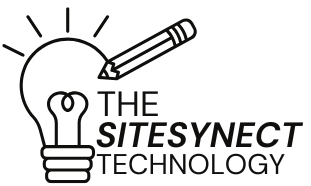AI-Powered Chatbots: Enhancing Customer Support in 2025
Discover how AI-powered chatbots in 2025 will revolutionize customer support with emotional intelligence, predictive analytics, and omnichannel integration. Stay ahead of the curve!

Introduction: The Rise of Smarter, More Human-Like Chatbots
By 2025, AI-powered chatbots will no longer be clunky, scripted responders—they’ll be empathetic, proactive partners in customer support. With advancements in natural language processing (NLP), emotional AI, and predictive analytics, chatbots are set to resolve 85% of customer queries without human intervention. In this article, we explore how AI chatbots will redefine customer service in 2025 and why businesses must adapt now to stay competitive.
Top 5 Trends Shaping AI Chatbots in 2025
1. Hyper-Personalization with Emotional Intelligence
AI chatbots will analyze tone, sentiment, and even biometric data (e.g., voice stress) to tailor responses. For example:
-
A frustrated customer gets a calming, solution-focused reply.
-
A loyal client receives personalized product recommendations based on purchase history.
Tools: Emotion-sensing AI like Affectiva and Replika’s advanced NLP models.
2. Seamless Omnichannel Integration
Chatbots will operate across platforms (WhatsApp, Instagram, SMS, AR/VR) with unified memory. Start a convo on Facebook Messenger, continue it in a VR store, and finish via email—all without repeating details.
3. Predictive & Proactive Support
Instead of waiting for complaints, chatbots will:
-
Alert users about subscription renewals.
-
Fix issues preemptively (e.g., “We noticed your payment failed—update your card here?”).
-
Suggest fixes based on IoT device data (e.g., a smart fridge reporting a malfunction).
4. AI + Human Collaboration
Chatbots will escalate complex issues to human agents with full context, reducing resolution time by 50%. Hybrid models like “humans-in-the-loop” ensure empathy and accuracy for sensitive cases (e.g., healthcare or financial disputes).
5. Ethical AI & Privacy-First Design
With GDPR 2.0 and stricter regulations, chatbots will prioritize:
-
Transparent data usage (“We’re saving your chat history to improve service—opt out anytime”).
-
Bias-free responses through audits and diverse training data.
-
Anonymized interactions to protect user identities.
Real-World Use Cases in 2025
-
E-commerce: A chatbot guides a shopper through a VR store, suggests outfits via AR try-ons, and processes returns automatically.
-
Banking: Detects fraud patterns in real time, freezing accounts and notifying users via voice-to-text chatbots.
-
Healthcare: Symptom-checking chatbots book appointments, share lab results, and offer mental health support using HIPAA-compliant AI.
Benefits of Next-Gen AI Chatbots
-
24/7 Global Support: Serve customers in 100+ languages without hiring overnight teams.
-
Cost Efficiency: Reduce customer service costs by up to 30% (Gartner).
-
Faster Resolutions: Instant answers cut average handling time by 70%.
-
Deeper Insights: Analyze chat data to spot product issues or market trends.
Challenges to Tackle
⚠️ Over-Reliance on Automation: Risk of alienating customers needing human touch.
⚠️ Security Risks: Hackers targeting AI models with adversarial attacks.
⚠️ Ethical Dilemmas: Ensuring AI doesn’t reinforce biases in hiring or loan approvals.
Conclusion: Embrace the Bot-Human Partnership
By 2025, AI chatbots won’t replace humans—they’ll empower teams to focus on high-value tasks while delivering faster, more personalized service. Businesses that invest in adaptive AI tools today will lead industries tomorrow. Ready to transform your customer support? The future is just a chat away.
What's Your Reaction?
 Like
0
Like
0
 Dislike
0
Dislike
0
 Love
0
Love
0
 Funny
0
Funny
0
 Angry
0
Angry
0
 Sad
0
Sad
0
 Wow
0
Wow
0





































